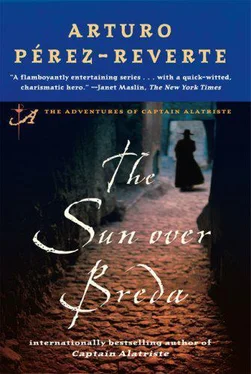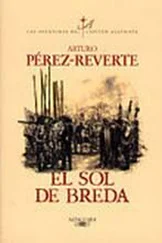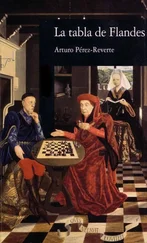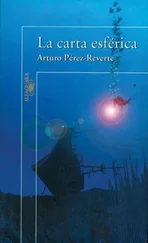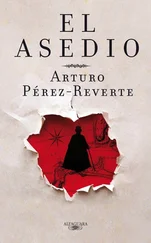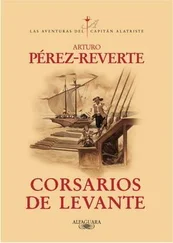Arturo Pérez-Reverte - The Sun Over Breda
Здесь есть возможность читать онлайн «Arturo Pérez-Reverte - The Sun Over Breda» весь текст электронной книги совершенно бесплатно (целиком полную версию без сокращений). В некоторых случаях можно слушать аудио, скачать через торрент в формате fb2 и присутствует краткое содержание. Жанр: Старинная литература, на английском языке. Описание произведения, (предисловие) а так же отзывы посетителей доступны на портале библиотеки ЛибКат.
- Название:The Sun Over Breda
- Автор:
- Жанр:
- Год:неизвестен
- ISBN:нет данных
- Рейтинг книги:5 / 5. Голосов: 1
-
Избранное:Добавить в избранное
- Отзывы:
-
Ваша оценка:
- 100
- 1
- 2
- 3
- 4
- 5
The Sun Over Breda: краткое содержание, описание и аннотация
Предлагаем к чтению аннотацию, описание, краткое содержание или предисловие (зависит от того, что написал сам автор книги «The Sun Over Breda»). Если вы не нашли необходимую информацию о книге — напишите в комментариях, мы постараемся отыскать её.
The Sun Over Breda — читать онлайн бесплатно полную книгу (весь текст) целиком
Ниже представлен текст книги, разбитый по страницам. Система сохранения места последней прочитанной страницы, позволяет с удобством читать онлайн бесплатно книгу «The Sun Over Breda», без необходимости каждый раз заново искать на чём Вы остановились. Поставьте закладку, и сможете в любой момент перейти на страницу, на которой закончили чтение.
Интервал:
Закладка:
“In the end,” he said finally, “it will always be remembered as it is here. When you and I and all the rest of them are dead.”
I was studying the faces of the colonels and captains in the foreground, some still lacking the artist’s finishing touches. Of least importance to me was that, except for Justin of Nassau, the prince of Newburg, don Carlos Coloma, the Marqués de Espinar, the Marqués de Leganés, and Spínola himself, none of the other heads in the main scene corresponded to those of royal personages. I was equally indifferent to the fact that Velázquez had given the features of his fellow artist and friend Alonso Cano to the Dutch harquebusier on the left and that on the right he had utilized features very close to his own for the officer in high boots who was looking out toward the viewer. Nor did I care that the chivalrous gesture of poor don Ambrosio Spínola—who had died in physical pain and shame four years earlier, in Italy—was exactly the same as it had been that morning, while the artist’s rendering of the Dutch general attributed to him more humility and submission than Nassau had shown when he surrendered the city at Balanzón.
What I had been referring to was that in that serene composition—in that “Please do not bow, don Justin, no,” and in the restrained attitude of various officers—something was hidden that I, farther back among the lances but close enough to see clearly, had observed that day: the insolent pride of the conquerors and the ill will and hatred in the eyes of the conquered. The brutality with which we had killed one another and would still do so in the future assured that the graves that filled the landscape of the background amid the misty smoke from burning fires would never be enough to hold the dead.
As for who was in the foreground of the painting and who was not, one thing was certain: We, the loyal and long-suffering infantry, were not . We, the old tercios that had done the dirty work in the mines and caponnieres, carried out encamisada raids in the night, breached the Sevenberge dike with fire and axes, fought at the Ruyter mill and the Terheyden fort, we foot soldiers with our rags and our worn-out weapons, our pustules, our illnesses, and our misery, we were nothing but cannon fodder. Yes, we were the eternal background against which the other Spain, the official Spain of laces and sweeping bows, took possession of the key to the city of Breda—which, as we had feared, we were not allowed to sack—and posed for posterity, indulging themselves in the sham, the luxury, of showing a magnanimous spirit. We are among caballeros, and in Flanders the sun has not yet set.
“It will be a great painting,” I said.
I was sincere. It would be a great painting, and the world would perhaps remember our unfortunate Spain, made resplendent in that canvas on which it was not difficult to sense the breath of immortality issuing from the palette of the greatest painter time had known. The reality, however, my true memories, were to be found in the middle distance of the scene. Inadvertently, my glance kept straying there, beyond the central composition, which did not matter a nun’s fart to me, to the old blue-and-white-checked standard on the shoulder of a bearer with thick hair and mustache, who well could be Lieutenant Chacón, whom I had watched die as he tried to save that same piece of cloth on the slope of the Terheyden redoubt. My eyes went to the harquebusiers—Rivas, Llop, and others who did not return to Spain, or anywhere else for that matter—backs turned to the principal scene, lost in the forest of disciplined lances; the lancers themselves, all anonymous in the painting, were men to whom I could, one by one, give the names of the living and dead comrades who had carried those lances across Europe, holding them high with their sweat and their blood, to demonstrate the truth of what had been written:
Always on the brink of war they fought, forever grand, in Germany and Flanders, too, in France and upon English land. The very earth bowed down to them trembling as they passed, and ordinary soldiers, massed in unparalleled campaign, across the world, from East to West, carried the sun of Spain.
It was they, Spaniards with several tongues and lands among them but all united in ambition, pride, and suffering, and not the pretentious figures portrayed in the foreground of the canvas, who were the ones to whom the Dutchman was delivering his precious key. To those nameless, faceless troops barely visible on the slope of a hill that never existed, where, at ten o’clock on the morning of 5 June in the twenty-fifth year of the century, regnant in Spain our king don Philip IV, I, along with Captain Alatriste, Sebastian Copons, Curro Garrote, and the remaining survivors of their decimated squad, witnessed the surrender of Breda. And nine years later, in Madrid, standing before Diego Velázquez’s panorama, it seemed that I could again hear the drum and that I was watching, amid the forts and smoking trenches in the distance, near Breda, the slow advance of the old, implacable squads, the pikes and standards of what was the last and best infantry in the world: despised, cruel, arrogant Spaniards disciplined only when under fire, who suffered everything in any assault but would allow no man to raise his voice to them.
EDITOR’S NOTE CONCERNING THE
PRESENCE OF CAPTAIN ALATRISTE IN
DIEGO VELÁZQUEZ’S PAINTING
THE SURRENDER OF BREDA
The alleged presence of Captain Diego Alatriste y Tenorio in the painting The Surrender of Breda has been debated for many years. On the one hand, we have the testimony of Íñigo Balboa, who was witness to the composition of the painting and who has unhesitatingly stated on two occasions that the captain is represented in Velázquez’s canvas. On the other hand, studies of the heads on the right side have resulted in the positive identification of Spínola and established as probable those of Carlos Coloma, the Marqués de Leganés, the Marqués de Espinar, and the prince of Newburg, these according to analyses by Professors Justi, Allende Salazar, Sánchez Cantón, and Temboury Álvarez, but they reject the idea that any of the anonymous heads corresponds to the physical features Íñigo Balboa attributes to the captain.
The bearer holding the standard on his shoulder cannot be Diego Alatriste, nor can the musketeer in the rear, who has no beard or mustache. Similarly eliminated are the pale, bareheaded caballero standing beneath the standard and beside the horse, and the corpulent, dark-skinned, hatless officer standing beneath the horizontal butt of the harquebus, whom Professor Sergio Zamorano from the University of Seville believes to be Captain Carmelo Bragado. Some scholars have argued the possibility that Alatriste was portrayed in the officer on the extreme right, behind the horse, looking toward the viewer, a person other experts, such as Temboury, judge to be Velázquez himself, who thus balanced the supposed inclusion of his friend Alonso Cano at the extreme left as the Dutch harquebusier.
Professor Zamorano similarly points out in his study of the painting, Breda: Realidad y leyenda , that Diego Alatriste’s physical attributes might correspond to those of the officer situated at the right of the canvas, although that man’s features, he suggests, are softer than those described by Íñigo Balboa when he speaks of Captain Alatriste. In any case, as the translator and scholar Miguel Antón of Barcelona writes in his essay “El Capitán Alatriste y la rendición de Bredá,” the age of that caballero, no more than thirty or so, does not coincide with the age of Alatriste in 1625, much less with his fifty-one or fifty-two years in 1634–1635, the date the painting was completed. Neither does the clothing of the officer correspond with what Alatriste, then a simple soldier with the nominal rank of squad corporal, would be wearing in Flanders. There is still the possibility that Alatriste was not represented in the group on the right but among the Spaniards down the slope, in the center of the painting, behind the extended arm of General Spínola. However, a very careful examination of their features and clothing published in Figaro magazine by the specialist Étienne de Montety seems to negate that theory.
Читать дальшеИнтервал:
Закладка:
Похожие книги на «The Sun Over Breda»
Представляем Вашему вниманию похожие книги на «The Sun Over Breda» списком для выбора. Мы отобрали схожую по названию и смыслу литературу в надежде предоставить читателям больше вариантов отыскать новые, интересные, ещё непрочитанные произведения.
Обсуждение, отзывы о книге «The Sun Over Breda» и просто собственные мнения читателей. Оставьте ваши комментарии, напишите, что Вы думаете о произведении, его смысле или главных героях. Укажите что конкретно понравилось, а что нет, и почему Вы так считаете.
